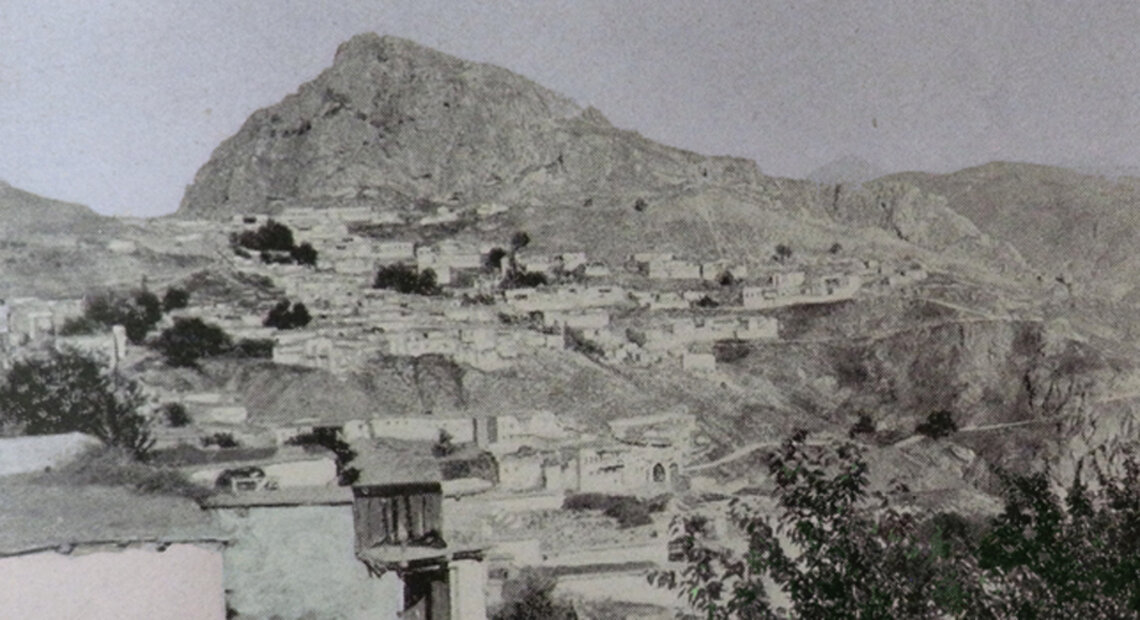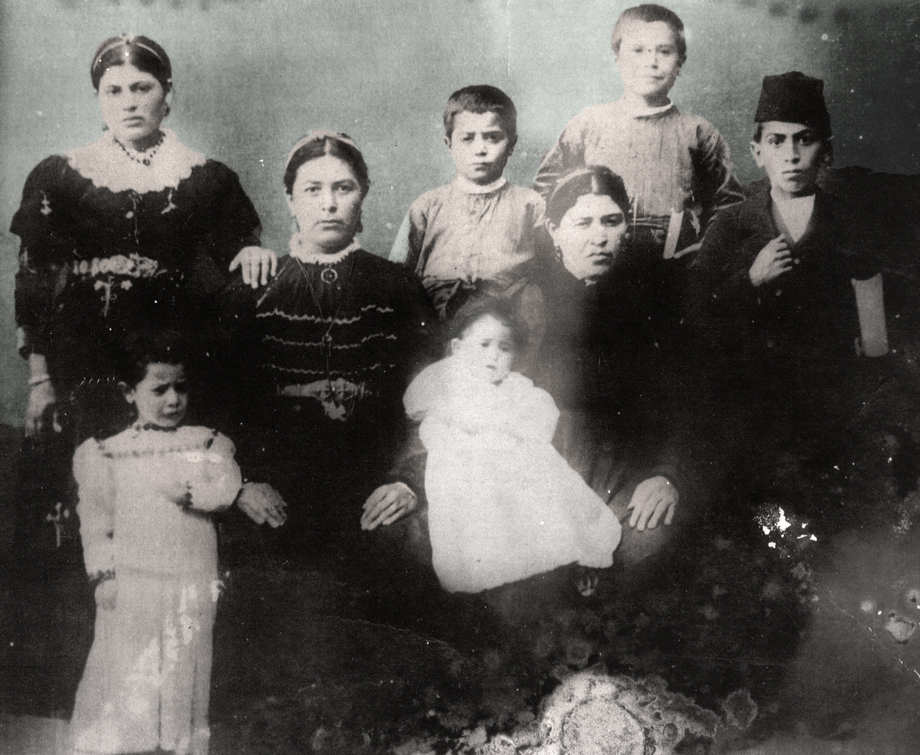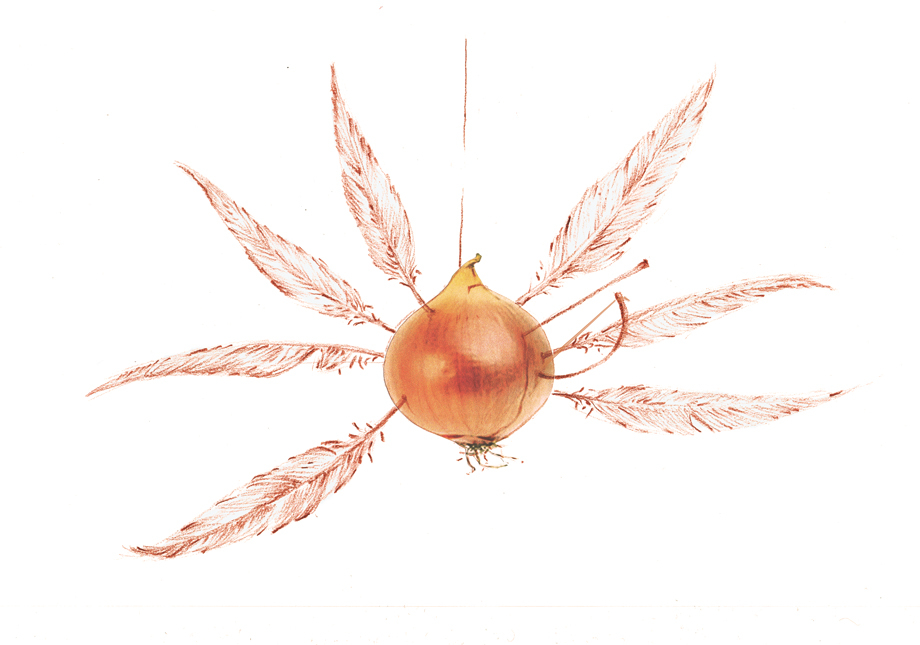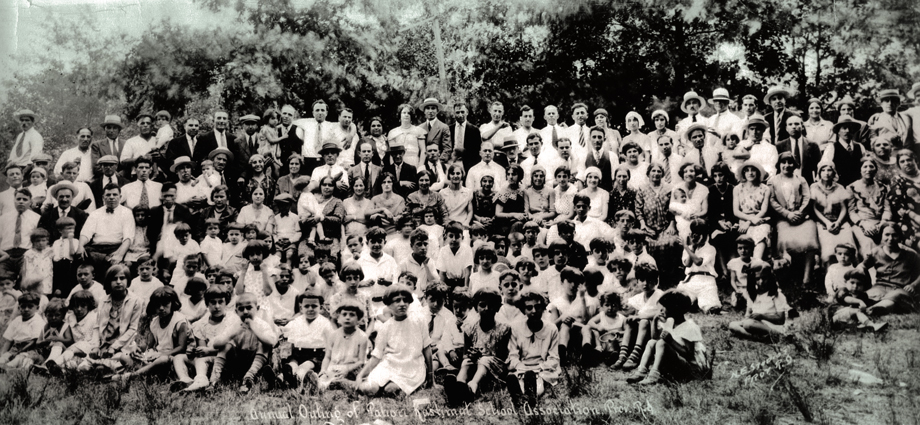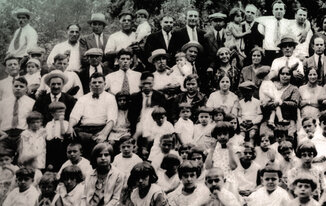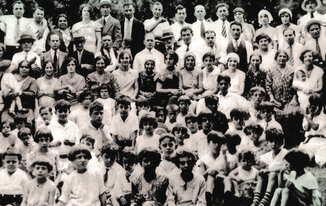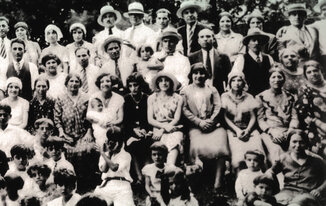Palu - Festivals
5 July 2011

New Year
The New Year festival takes place on the evening of the 31 December, with the New Year beginning after midnight. On New Year evening the table is set with seven different dishes:
Khoru – ingredients: bulghur; ground, pounded sesame turned into paste; a little pounded red pepper; chopped onion. All these ingredients are mixed together and put into a saucepan half-full of water, the lid is put on it and sealed with flour so that air cannot enter. Then it is put into the tonir (oven) to boil.
Keofte (patties) made with bulghur and chickpeas –ingredients: bulghur and triple the amount of chickpeas. This dish greatly resembles the comparatively better known one called topig.
Khoshab (compote) – made from apricots, plums, raisins and concentrated grape juice (bekmes).
Anushabur (sweet soup) – ingredients: beaten and huskless wheat, walnuts, almonds, raisins and honey (sometimes replaced by bekmes or kazbe[1]).
Perper abur (purslane soup) – ingredients: dried purslane, pounded wheat, red beans, ground lentils, dry pepper, onions and sesame oil.
Bahots keshkeg (Fasting keshkeg) – ingredients: pounded wheat, lentils, chickpeas, dried artichoke, dry vegetables, sesame oil.
Shushmayi hats (sesame bread) – ingredients: dough made from wheat flour, rolled very thin and fried in sesame oil. Then each side is coated with a liquid mixture made of sesame oil and bekmes (or honey). When ready, they are piled one on top of another. [2]
When the evening gets dark, the kodegakh (hanging the belt) custom begins in the villages. This is a long belt hung from roof of the house and which has a large bag tied to the free end. The lady of the house fills more than one similar bag with walnuts, raisins, almonds, bastegh (apricot leather), rodjig (strings of dried almonds or walnuts), kesme (pieces of very well boiled thickened bekmes like Turkish delight), and hangs them from the roof. [3] Dikran Papazian writes, about this tradition, that in his village, Havav, it is the adults who go from roof to roof with a bag suspended from a rope. This bag, known as chanta (çanta) is lowered by them down the chimneys as they shout ‘Ale vela, ale vela vor chantas letsun yella’ (Ale vela, ale vela so my bag rises full). Those below, sitting around the hearth, see the bag, and the lady of the house fills it with walnuts, raisins and bastegh (apricot leather). [4] Melkon Giurdjian (Hrant) who spent his youth in Havav village also describes the New Year there. In the cold of winter the boys jump from one roof to another and hang their bags from the roof expecting those within the house to fill them with fruit. Standing on the roofs they sing:
Aleluia՜, alleluia,
Meg kata, meg kulindja
Dvek mezi, yella՜ ka... [5]
The same custom exists in Palu town too. On New Year’s Eve, between about 9 and 10pm, the young boys and youths let a string with a red apple tied to it down the chimney. In the house, those sitting around the fire grab the string carrying the apple; the house owner then squeezes several low value coins into its flesh, and then shouts for them to pull it up. In the town they also lower bags down chimneys and the lady of the house fills it with fruit. Sometimes the bag is lowered already filled, and the recipients of the gift are those in the house. [6]
At midnight in the villages around Palu, the elder of the house takes his male children to the village fountain. They take with them special loaves looking like hooves, made for the cattle. Other loaves are baked to look like agricultural or trade tools (plough, shuttle, adze, thimble or scissors). It is an old tradition that the village men gather round the fountain at midnight on this particular night, strip completely and bathe in its icy water. At the same time they wet the loaves, kept in large sieves, allocated for the animals. They return home, the cattle begin to eat their portion and villagers theirs. [7]
The dining ceremony begins the following morning – New Year’s Day. First, when the children awake, they find socks suspended above their heads filled with raisins, walnuts and bastegh. The little ones will have been told in advance that the gifts have been brought by shvod (an evil spirit) who can change the appearance of naughty children on New Year’s night. [8] The presents given in the town are usually worth more money. Towards morning, the members of the household come and, in order, kiss the old family members’ hands, wishing them a happy New Year. The old people, in their turn, kiss them, give them their blessing and offer each member of the family a gift, which could be a gold or silver ring, earrings, a handkerchief, a pillow case, money etc. [9]
The table in the house is set with the seven dishes. Wine accompanies the meal. Those at the table begin singing New Year songs, amongst which Rev Harutiun Sarkisian recalls:
Pari yegar Nor Dari,
Du՛r mezi tsoren, kari,
Le, le, le, le, akh le,le,
Mer petagn alir g’uze
Le, le, le, le...
Dandigine yegh g’uze, le, le,
Pukherigs mukh g’uze, le, le...
Mer odjakhe pad g’uze, le, le...
Ekun baghchin bdugh dur, le,le,
Mer aghchigin pesa dur, le, le...
Mer dghayin hars me dur, le, le...
Hiurendutin togh chelli
Kesadutin togh chelli, le, le
Heiran Nor dari [10]

From Palu to Providence: Survival of a Legacy ('Palutsi' picnic in Providence)
A clip from Misak Berberian’s film ‘40 Years of Memories: 1932-1972’, produced in the 1930s and now edited by Silvina Der-Meguerditchian. Natives of Palu in Providence (Rhode Island, USA) appear during a picnic. The film belongs to the George Aghjayan collection. The song ‘Palu kaghak shinver e’ (Palu town has been built) is sung by Maro Nalbandian (taken from Bedros Alahaidoyan’s book ‘Palu’s (and district) musical-ethnographical collection’ (in Armenian), published by Trazarg Press, Glendale, California, 2009.
The presentation of Jesus Christ at the temple (Dearnentarach)
The ceremony of lighting bonfires in the villages around Palu takes place on the evening before this festival. According to Sarkisian, bonfires are lit mainly in two places: in the centre of the open courtyard of the church, and on the roof of the mayor’s (res) house. First kindling is used then, when it burns up, green juniper branches are added. Apart from these large ones, small fires are lit in front of almost every house or on their roofs. [11] In his account concerning Havav, Papazian writes that a pile of juniper branches is made in the church yard in their village, where the fire is lit. [12] Topalian, writing about Okhu, points out that in his village they are lit in three different places. [13] In Palu town there is no tradition of lighting a large fire, every house lighting a small one in its place. [14]
The people of Palu give this festival the name of Melemed or Meled that, according to S. Malkhasiants ‘Armenian Explanatory Dictionary’, is more in keeping with ‘lighting the fires’ than of the festival itself, that over a period of time has become a synonym for the feast of ‘The presentation of Jesus at the temple’ (Dearnentarach). This feast is also known as Derendas. This happens every year on February 14th. In essence it is a pagan festival, but at the same time coincides with the 40th day after Jesus’ birth.
It is a custom that on this (Presentation) day, before dawn, the young men who are to be married make the climb up a nearby mountain with their godfathers and return to their villages on the same day. Then, about one or two hours before the evening vespers the same men are entrusted to prepare the materials for the fire on the roof of the village mayor’s house. Topalian recalls that in Okhu this pile of kindling and branches is about 3.5 metres (10 feet) high. [15] After vespers, all the inhabitants of the village go, in procession, each person carrying a lighted candle, and assemble on the roof of the mayor’s house. This ceremony of lighting the bonfire is supervised by the priest. It is he who first makes the sign of the cross and lights the first pieces of kindling. The villagers follow his example. Then they all – including the young men who are to be married – begin to swiftly circle the fire, the flames of which are rising to the heavens. The people begin to sing, while many young people jump over the fire. The people are convinced that by circling the fire or jumping over it, their wishes for this Presentation festival day will be realised, and they will be protected from future dangers. When the fire is almost out, everyone picks up a partially burnt branch or stick from the edge of the bonfire and takes it to his home. The burnt stick or branch is divided up into several pieces, a piece being put in the henhouse, the stable, the barn and the hayloft. The villager is convinced that the pieces of wood from the Presentation fire may bring wealth and abundance and give their animals protection too. They also see the same qualities in the fire’s ashes, portions of which are collected and taken home too. They use it for a whole year in their house hearths, as well as in the oven (tonir) when they bake bread. They also sprinkle some of the ashes over the fields, with the hope of getting a generous harvest. [16]
For the peasant, the direction the smoke from the fire takes is important too. When the wind blows it northward, then it is considered to be a good harbinger and means that the annual harvest will be large. If the wind blows it southwards, it is considered bad luck and presages an arid year with all its consequences. [17]
After these ceremonies, everyone returns to their homes, where the day’s special food – goma – has been prepared. This is a dish made of flour to which cooked onions, various spices and pounded sesame are added. Then singing and dancing begin, lasting until late at night. The people of Palu don’t work on the day following this festival. [18]
From Palu to Providence: Survival of a Legacy (A Family Gathering)
A clip produced in the 1950s and now edited by Silvina Der-Meguerditchian. One of the Giragos Der Manouelian’s family get-togethers in Providence (Rhode Island, USA). Giragos was born in the village of Sakrat in the Palu district. His relatives from Palu who live in Marseilles are present. The film belongs to the George Aghjayan collection. The song ‘Tamzara’ is sung by Maro Nalbandian (taken from Bedros Alahaidoyan’s book ‘Palu’s (and district) musical-ethnographical collection’ (in Armenian), published by Trazarg Press, Glendale, California, 2009.

St Sarkis
The feast of St Sarkis is celebrated during the coldest part of winter (in February) and preceeds Paregentan. This saint is greatly revered in the Palu district. On the feast day itself, despite the cold and snow, the Palu Armenians and Kurds visit the places of pilgrimage dedicated to him. The Kurds call him Kheder Elias (Khezer St Sarkis). It is one of their habits to swear in the name of Kheder Elias or, if they are in trouble, to depend on this saint. [19]
Many Armenians, especially women, brides and mature girls fast continually for several days on the occasion of this saint’s day, in other words they eat nothing. The fasting has two stages ; the first begins on a Monday and continues until midday on Wednesday. They eat nothing for two and a half days, not even drinking water. At midday on the Wednesday those who have kept the fast eat with their relatives and neighbours. This meal is called dzomapats or ‘opening of the fast’. Then the fasting continues from after the meal on the Wednesday until Friday night. It should be said that this fasting is usually maintained very strictly, especially as apart from the fact he is an object of worship, at the same time St Sarkis is a frightening saint, a brave, noble saint on his white horse, who can punish all those who break their fast before the right time. [20]
A good example of a place that reveres and fears St Sarkis in the Palu district is the village of Okhu (now Bulgurcuk). According to Topalian, most of the village empties on St Sarkis’ feast day. To the east of the village there is a holy place in a rocky area. The villagers of Okhu, as well as pilgrims from other villages, go there in groups, bringing with them various sacrifices. A large guelder rose bush stands above the rocks, and the pilgrims tie pieces of cloth to its branches. [21]
Paregentan
The Palu Paregentan we present here concerns the week in February before the beginning of the great Lenten fast leading up to Easter, which is also given the name of ‘The real Paregentan’ (pun paregentan). It is obvious that the days of this festival are characterised by great feasting and merriment, especially as the following weeks are a time of fasting and abstinence, during which people refrain from eating animal products. The festivities generally last for four days – from Thursday to Sunday.
Many kinds of delicious dishes are the ruling presence during these ‘Real Paregentan’ celebrations, Melikian pointing out a Turkish explanation with regards to them, which expresses the Turk’s or Kurd’s popular depiction of the Armenians’ ‘Real Paregentan’. For this festival they say gavurun patlamak haftası dır, in other words ‘the infidels’ explosion week’. [19] The Armenians in their turn have a saying: ‘When the Turk and the Kurd go hungry, they remember the Armenian Paregentan’. [20]
The following dishes are remembered from the ‘Real Paregentan’:
Patila – This is a pastry, prepared with wheat flour. First the dough is rolled very thinly and divided into two. Cheese or khawurma is put on the first half and covered with the second. The edges are stuck together then cooked on a saj (an inverted circular metal dish heated by a fire below it). After cooking it is cut into small square pieces and handed round.
Seron – It is prepared using thinly rolled dough. It is cut into small pieces, and then dipped completely in yogurt soup flavoured with garlic. It is then put into a deep pan and finally oil is added.
Pekhpekhig – A sweet, prepared with flour, egg yolk and milk. It is cooked in oil, and then concentrated grape juice or honey is added on top. Each piece is a little larger than a walnut. [21]
The families go on to the roofs of their houses after every meal during ‘Real Paregentan’ week, where the same festive atmosphere continues with singing and dancing. At the same time other men take part in games and competitions in the village, such as the ‘shield game’, running or kalpokh. [22] Rev Harutiun Sarkisian recalls several songs and dance-songs such as ‘Dzngn adzo, dzngn adzo’, ‘Baghchin bade pler e’, ‘Agheg im, aghn i՞nch enem’. [23]
Baghchin bade pler e
Yares meche kener e
Tsan gu dam, tsanes charner
Meger izmen tsaver e:
Es or agheg me desa,
Gujn arav chure g’erta,
Vodke selekhvav ingav,
Tserkin prnadz, guje godrav:
Mi՛ lar aghchig, esi mi՛ lar,
Gujet shinim vosgi angov,
Chur letsnem varti rengov:
The celebrations continue during the following days. Dikran Papazian notes that it is the custom in Palu’s Havav (now Ekinözu) village for weapons (daggers, pistols and rifles) to be borne during these feast days by the men of the village; clowns cover their faces with soot, wear ridiculous clothes and move about the village on stilts. [24] On Saturday, a table is laid not far from the village gardens for a mid-day meal set up by the youths of the village. Carpets are put around the long table and covered with tapestries and cushions. The great and small of the village arrive and dances begin, songs are sung and feasting takes place. The food prepared on particular this day comprises generally meat dishes, the most notable among them being a mutton roast. Having filled and gutted a sheep, they fill it’s stomach with bulghur mixed with spices, then hang it over the fire in the bottom of the oven (tonir) and cover the oven top. It is left there until it browns. This dish is called khapama or brian and is the meal served in all the wealthy houses on ‘Real Paregentan’ Saturday. Wine accompanies this collective feast. [25] Rev Harutiun Sarkisian writes that during this festive event, it is the custom to present a play in the gardens:
‘The person presenting the play is called the judge and has his policemen and secretaries, all wearing the robes appropriate to their offices. As soon as it is time for the performance, the judge, riding a wooden horse, goes to where the main dance is taking place and where the village headman and the other notables are sitting enjoying themselves. He approaches with great solemnity... with an angry and disgruntled face. His messenger-policemen come before him to prepare his way through the crowds of villagers. Protective policemen walk on both sides and behind him to safeguard his life. All of them are disguise, so it is impossible to recognise them if they are not betrayed by their voices. The judge is going to conduct a trial. It is to be honest and impartial, and he detained the people he has previously selected. They are with him, the main culprit the village headman (res), followed by the village elders.
‘[...] The court is arranged, and the judge sits slightly higher on two cushions in the place assigned to him, right next to the elders’ table, close to them. All the dancing and games are halted because the trial is about to begin. The elders stop eating too. The judge, considering the right time has come, declares the court open and gives permission for the false headman to be called to the court. The policemen bring him immediately and the cross-examination begins in public [...]’ [26]
The ‘trial’ of the village headman in public makes this play unique. It is notable that it sets before us, very clearly, all of the main worries concerning daily life in the village, with the headman-actor being accused of not conducting affairs with the necessary sympathy. Thus the judge announces that the former field watchman (khorudji), has been dismissed, the headman has delayed in appointing a new one since. Taking advantage of this situation, certain evil-minded villagers have secretly allowed their goats, cows and oxen to graze in other people’s fields – creating great losses for them – and the headman has not been able to do anything against this injustice. This absence of a watchman has also been the reason that the Kurds have been able to steal great quantities of wood from the fields. The headman is also accused of not dealing with the irrigation work properly, so the harvest has been poor. He is therefore guilty as he has not made any effort to solve the question of irrigation during the year, has never been to the water source, and has not wanted to know why the neighbouring Kurds have abrogated the agreement concerning the division of water this year and used more than they should. Or, for example, the vineyard watchman has been lax in his duties and has closed his eyes to thievery, leading to the grape harvest being smaller than usual this year – he had received his whole year’s pay but the headman has not even been interested in this skulduggery. It is the same for the village shepherd, who has done wrong several times; he has taken this or that person’s goat or sheep to graze and has never returned them to their owners. The headman, once again, has remained silent about this. Among those who have done wrong in the village is the shahna, the government official who determines the government tithe. The judge announces that this year the shahna has violated many things, has exaggerated the amount of the vineyard, mulberry and fruit harvest, of course to the detriment of the villagers. The headman, once more, has done nothing, despite the fact that it is his responsibility to protest to the government and demand that a government enquiry should be opened. [27]
Having read out all these accusations, the judge now begins to examine dissentions that have appeared among the villagers, and that until today have not been solved because of the same headman’s carelessness. Thus two villagers have been in dispute for a year over the determining of the border between their adjoining fields. One of them accuses his neighbour of enlarging his field boundaries at his expense. The village headman, who knows all about this argument, has sat and done nothing. The judge points out that it is the headman’s responsibility to go with the village meliks and examine the reason for the dispute on site, fix each villager’s field border and finally resolve the problem between the two neighbours. [28]
So the accusations follow, one after another. At the same time we can plainly see the important part played in village life by the headman and his responsibilities. The person playing the role of headman tries to defend himself, unsuccessfully, as the proof is clear and the witnesses many. At the end, the jury gives its verdict: to relieve the headman of his position. The headman is divested of his meruz aba (a special coat), only worn in the village by someone in his position. They then chain him up and the policemen come to his side and take him to a special staircase built for this performance and seat him on it. The headman promises to compensate all who have suffered losses. Then he and his fellow officials are freed. [29]
Dancing, singing and games follow the play. They continue the following day too – the Sunday of the ‘Real Paregentan’.
Papazian, writing about Havav village, make reference to the performance of the play in his memoirs. In this village in the Palu district, the ‘Real Paregentan’ celebration is joined to that of feast of Sts Vartanantz on the Thursday of ‘Real Paregentan’ week and, on this occasion, the performance of the play takes place in the school hall immediately after the church service. It is the custom during this time of festival for men to wear swords when they go out in the village. This is regarded as a sign of respect and honour for the leader of the fallen heroes of battle that took place in the 5th century, Vartan Mamigonian, who was canonised. [30]
Lent and Easter
Pun Paregentan ends on the Sunday, with Lent beginning on the next day, Monday. It lasts for seven weeks, until the ‘Lighting of the Lamps’ for Easter (Zadig), in other words until the evening of Easter Saturday, the day before Easter day.
Lent (Bahk) is the period of self-denial, fasting and repentance, during which the Christian believer must not sin and refrain from eating all animal products. These are the seven weeks of spiritual self-discipline, which are generally given great importance by the Armenians of Palu. In the villages around Palu spiritual cleanliness has a physical cleanliness meaning too. Thus during the first two weeks of Lent all the utensils in the house – cauldrons, tubs, trays, plates, frying pans etc – are all washed, with even the tiniest trace of animal fat bing scrupulously removed from them. After being washed, they are wiped with ash. Then a great ceremony of bathing begins, during which every member of the household bathes and is cleaned. [31] In Palu town, house cleaning takes place during the last two weeks of Lent, which takes days. During this time, the girls and women of the family go down to the bank of the Aradzani (Murad) River, taking all the soiled kilim carpets, curtains and everything requiring a lot of water to wash them in, and clean them all. [32]
Singing, dancing, feasting and laughing all cease.
During the whole of Lent the khorpologh is hung from the exact centre of the ceiling ; it is also called khulindjag or khulundjig. This consists of a hard onion, with seven cockerel feathers pressed into it, representing each of the seven weeks of Lent. A small bow and arrow is added to these. Every time a lenten week has passed, the family removes one of the feathers from the onion, doing this until Easter Saturday. The khorpologh is also used to chastise naughty children. They are often told, ‘Behave or the khorpologh will see what you are doing.’ [33]
It is the custom in Palu for the families, two Sundays before the end of Lent, prepare themselves to go up to the chardakh. This is a wooden structure on the roof of the house, used as a dwelling during the summer. In the case of Palu it is a structure made with four columns. During spring, the women and girls of the house occupy themselves with plastering the chardakh. To do this they prepare a special paste made from clay, straw a liquid made from animal dung and water. They paste the chardakh’s walls and floor and, a few days later, whiten the walls with a white stone. On Palm Sunday (one week before Easter) the family will already have moved into their chardakh. [34]
On Palm Sunday (Dzaghgazart) the faithful return to the church, bringing with them oleaster or willow branches that they had kept in the house, as protection against snakes and scorpions. [35]
In the villages around Palu it is the custom for every young man, on Palm Sunday morning, to carry a cudgel made from willow or poplar wood and painted red that, according to Sarkisian, is called serse chbukh. In his turn, Melikian recalls the game played with these cudgels, with the difference that they are given the name dadjgenag and adds that it takes place on Easter Saturday. So the cudgel game begins in the streets or on the roofs of the houses. Someone leans his cudgel at an angle against a wall and another person tries to break it with one powerful blow with his own. The game continues in turn, until one cudgel is brken and its owner declared the loser. At the end, all the broken cudgels are collected and used to fuel a huge bonfire. [36]
On Palm Sunday evening the meal consists of tanabur, prepared from yogurt and water, with beaten wheat and mint. On the table, next to this dish there will always be red-painted eggs [37], while in Palu town a cake must always be present too. [38] On Good Friday (Avak Urpat) it is the custom for some of the artisans in Palu town – especially the goldsmiths among them – to work, bearing in mind that things made on that day are especially esteemed. [39]
Another custom in the town is that on Good Friday the congregation in the church tie or sew a person’s clothes together. Some of the faithful bring thread and needles with them, select a target and secretly sew one of the target’s garments to another. [40]
On the following day, Easter Saturday (Avak Shapat) fasting ends. This is a day of rejoicing. The women are occupied in the early morning with cleaning the house and preparing the parlour or living room as the following day, Sunday, is reserved for guests and Easter congratulations. On Easter Saturday the young men dress in their best – and sometimes new – clothes. They then gather in the church courtyard, where the battle of multi-coloured eggs takes place. This game is reserved for men only. The mature people, also dressed in their best clothes, and go to church. In Palu town the young women and girls cover their heads and faces with a thin silk veil, that, according to Grayian, is used to protect them from neighbouring prying Turkish eyes. After the church service, the Armenians of Palu return to their own homes and remove the final feather from the khorpologh (khulundjig). Then games and dancing begin on the roofs. Saturday evening is Easter-Eve. Although fasting has ended, the people of Palu still refrain from eating meat. The Lighting of the Lamps (Djrakaluits) on the evening before Easter is considered to be navagadik or, in other words the end of Lent. Animal products may be eaten, but people still don’t eat meat itself. The evening meal on this particular day usually consists of yogurt soup, fish, boiled eggs and dishes cooked with olive oil. [41]
On Easter Sunday the Armenian churches in Palu take on a special magnificence. The faithful are once more dressed in their most becoming clothes and are crowded together there. The young men play the ‘egg battle’ game in the church courtyard on this day too. After the service the people return to their homes and, after lunch, the custom of receiving guests begins. Thus families go from one house to another and make short visits to their friends and relations. [42]
Ascension
It is the custom, in the villages around Palu that, early on Ascension Day (a Thursday in May), the population – both male and female – gather at a large open area near the village. It is here that they celebrate the festival with special happiness and games.
The Sunday of the week that includes Ascension Day has special significance in Havav village. A service is not held in the church; all the faithful assemble at the Kaghtsrahayats Holy Mother of God monastery and which, on this special day, attracts Armenians from all over Palu district. Near midday all the people get together in the nearby forest, where each group prepares its meal – generally made of bulghur pilav. [43]
The Asension Day festival takes place at the end of spring. The day is also called the Lot-Drawing Day and usually concerns the young girls. On the Thurday before the festival, seven young girls (usually 13-14 years old) in the village are chosen who, carrying a pitcher each, go to seven different fountains and fill them with water, also putting seven different bunches of flowers in each pitcher. They then immediately come to the church, where the pitchers containing the water and flowers are blessed. These are then distributed among the houses in the village, where people mix some of the water with the milk in the churns they are making yogurt in, so that they will always have plentiful milk and oil. They feed the flowers to the dairy animals and the oxen that are usually harnessed for ploughing etc, hoping that they will fatten up. [44]
Early the next morning, in other words on the Thursday, the same seven girls, taking with them five others, get together in a room where they begin to cast lots, to establish what role each will play in the game to take place on the same day. The roles are: bride, the girl who dances with the bride, tambourine player, singer and gift collector. The group joins the church service, after which all twelve girls visit various homes, where they dance and sing special Ascension Day songs, while the people in the houses give them presents, such as oil, eggs, salt, bulghur and so on. The girls, weighed down with their gifts, return to their room, where they prepare the midday meal, to which they invite the priest, the deacons and the village poor. What remains is also distributed among poor families. [45]
Mesrob Grayian points out that Ascension Day celebrations in the town differ slightly from those of the villages. Thus, after the morning church service, the young people head towards the vineyards, the river bank or the flat roofs of houses, where parties begin. The older people visit each other in their homes. Wine and raki flow plentifully everywhere during this festival day. The lot-drawing takes place in the town too, but with a difference. Here the seven young girls bring the water they have collected from seven different fountains and pour it into in a wide-mouthed vessel, into which they also put seven different flowers, and gather together in the house of one of them. They enjoy themselves, sing, eat, and then get a much younger girl to draw the lots for them from a container they each had already put a personal item into, such as an earring, a ring, a small key, a button and so on. They begin to sing, in unison, a verse from ‘The lot-drawing song’ or something similar, containing a prediction – good or bad. The young girl draws the lots. The prediction in the verse sung relates to the owner of the item recovered. [46]
- [1] A form of manna, which falls on the leaves of trees in the forest. It is usually sweeter than honey.
[2] Rev Harutiun Sarkisian, (Alevor), Palu: its customs, educational and intellectual state and dialect (in Armenian), published by Sahag-Mesrob Press, Cairo 1932, page 13-14.
[3] Ibid., page 14.
[4] Dikran S. Papazian, History of Palu’s Havav village (in Armenian), published by Mshag, Beirut, 1960, page 114.
[5] Mesrob Grayian, Palu: pictures, memoirs, poetry and prose taken from Palu life (in Armenian), published by the Catholicossate of Cilicia, Antelias, 1965, page 324.
[6] Grayian, op. cit., page 320.
[7] Sarkisian, op. cit., page 14-15.
[8] Papazian, op. cit., page 115.
[9] Grayian, op. cit., page 321.
[10] Sarkisian, op. cit., page 16.
[11] Ibid., page 17.
[12] Papazian, op. cit., page 117.
[13] Parunag Topalian, My ancestral village of Okhu (in Armenian), published by Hairenik Press, Boston, 1943, page 37.
[14] Grayian, op. cit., page 372.
[15] Topalian, op. cit., page 37.
[16] Sarkisian, op. cit., page 18-19.
[17] Ibid., page 19-20.
[18] Papazian, op. cit., page 118.
[19] Grayian, op. cit., page 331-332.
[20] Sarkisian, op. cit., page 438-439. Topalian, op. cit., page 38-39.
[21] Ibid., page 38-40.
[22] Boghos Melikian, With paternal breath, Published by Hamazkayin, Beirut, 1969, page 279. (In Armenian)
[23] Grayian, op. cit., page 342.
[24] Sarkisian, op. cit., page 20-21.
[25] Papazian, op. cit., page 120.
[26] Sarkisian, op. cit., page 22-23.
[27] Papazian, op. cit., page 120.
[28] Sarkisian, op. cit., page 24-25.
[29] Ibid., page 25-26.
[30] Ibid., page 26-28.
[31] Ibid., page 28-29.
[32] Ibid., page 30-31.
[33] Papazian, op. cit., page 122.
[34] Sarkisian, op. cit., page 32.
[35] Grayian, op. cit., page 349.
[36] Sarkisian, op. cit., page 33. Grayian, op. cit., page 345.
[37] Sarkisian, op. cit., page 37-38.
[38] Grayian, op. cit., page 349.
[39] Sarkisian, op. cit., page 38. Melikian, op. cit., page 280.
[40] Sarkisian, op. cit., page 38.
[41] Grayian, op. cit., page 351.
[42] Ibid., page 351.
[43] Ibid.
[44] Ibid., page 352-353. Melikian, op. cit., page 279.
[45] Grayian, op. cit., page 354-355.
[46] Papazian, op. cit., page 127-128.
[47] Sarkisian, op. cit., page 39.
[48] Ibid., page 40-42։
[49] Grayian, op. cit., page 359-361.
